Building a Greener Future: Innovations in Sustainable Construction
Welcome to our in-depth exploration of sustainable construction technologies. As the world continues to grapple with climate change and its impacts, the construction industry has a vital role to play in shaping a greener future. From eco-conscious construction innovations and energy-efficient methods to sustainable infrastructure and architectural design, this article will take you through everything you need to know about building a sustainable future.
The need for sustainable construction solutions has never been greater. According to the United Nations Environment Programme, buildings account for around 40% of global energy use and emit a third of all greenhouse gases. However, sustainable construction practices can help to reduce this environmental impact while also delivering long-term cost savings and providing healthier, more comfortable living and working spaces.
Key Takeaways
- The construction industry has a crucial role in driving the transition towards a greener future.
- Sustainable construction practices can help to reduce greenhouse gas emissions and deliver cost savings.
- There are numerous sustainable construction technologies and techniques that can be employed to create greener buildings and infrastructure.
Green Building Practices for a Sustainable Future
In addition to innovative sustainable construction technologies, there is a growing focus on implementing green building practices. From reducing water consumption to sourcing eco-friendly materials, these practices prioritize environmental responsibility in building design and construction.
One such practice is the use of passive design strategies, which minimize the energy needed to heat and cool a building. This can include positioning windows to allow for natural ventilation and using materials with high thermal mass to regulate indoor temperature. By reducing reliance on mechanical heating and cooling systems, these strategies can significantly decrease a building’s carbon footprint.
Another key aspect of green building is water conservation. This can involve utilizing low-flow fixtures and rainwater harvesting systems, as well as landscaping with drought-resistant plants. By reducing water usage, buildings can conserve a vital resource and lower their impact on the environment.
Designing for Access and Inclusion
Green building practices also prioritize access and inclusion for all individuals. This can include implementing universal design features such as wide entryways and hallways, lever handles, and grab bars. Additionally, incorporating natural lighting and ventilation can improve indoor air quality and create a more welcoming and comfortable environment for all occupants.
Not only do these practices benefit the environment and building occupants, but they can also result in cost savings over time. By using sustainable materials and design strategies, buildings can reduce their energy and water usage, leading to lower utility bills and long-term financial benefits.

Eco-Conscious Construction Innovations: Paving the Way for Sustainability
As society becomes increasingly environmentally conscious, the construction industry is not far behind. Sustainable construction technologies have been developed to minimise the environmental impact of the construction process and create more durable and eco-friendly buildings. In this section, we will explore some of these eco-conscious construction innovations that are paving the way for a more sustainable future.
Green Roofs
Green roofs are a relatively new innovation that have been gaining popularity in recent years. Essentially, a green roof is a roof that is covered in vegetation and a growing medium, like soil. Not only do they absorb rainwater, but they also provide insulation and reduce the amount of heat that is absorbed, making them an energy-efficient choice. They also look great, adding a touch of nature to urban buildings. According to a study by the University of Sheffield, green roofs can reduce the temperature of a building by up to 25°C.
Recycled Building Materials
Another innovative approach to construction is the use of recycled building materials. This not only reduces the amount of waste that is sent to landfill, but it also reduces the need for the extraction of new raw materials. Recycled materials can include anything from reclaimed wood to plastic bottles, and are being incorporated into a variety of construction projects. One example is the Resource Rows project in London, which uses recycled materials to build affordable housing.
Solar Panel Cladding
Solar panel cladding is a new and innovative technology that integrates solar panels into the exterior walls of a building. This allows the building to generate its own electricity, reducing its reliance on external power sources. Not only is this energy-efficient, but it can also be aesthetically pleasing. An example of this can be seen in the BIQ House in Germany, where the building’s entire façade is covered in a layer of algae-filled panels that generate energy while also providing shade and reducing the building’s carbon footprint.

These are just a few examples of the many eco-conscious construction innovations that are available today. As awareness of the importance of sustainability continues to grow, it is likely that we will see many more innovative and exciting technologies emerge in the years to come.
Sustainable Infrastructure Development: Building for the Future
Building sustainable infrastructure is a crucial step towards a greener future. With the increasing need for eco-friendly and energy-efficient buildings, it is important to consider new construction techniques that focus on sustainability. These techniques not only help to reduce carbon emissions but also contribute to a healthier environment for future generations.
One of the most promising sustainable infrastructure development techniques is the use of green roofs. Green roofs involve covering a building’s roof with vegetation, providing insulation and reducing the amount of heat that is absorbed. This technique has been shown to decrease energy consumption by up to 30% and has a positive impact on the environment, including reducing urban heat island effects, air pollution and stormwater runoff.
| Benefits of Green Roofs | Benefits of Grey Water Systems |
|---|---|
| Reduces energy consumption | Reduces water consumption |
| Improves air quality | Reduces wastewater production |
| Reduces stormwater runoff | Recycles water |
Another eco-conscious development technique is the use of grey water systems. These systems collect and treat water from sinks, showers, and washing machines and repurpose it for non-potable uses such as irrigation or flushing toilets. This helps to conserve fresh water and reduce wastewater production.
Effective waste management is also a critical aspect of sustainable infrastructure development. Buildings should be designed to minimise waste production and maximise recycling. For example, integrating recycling and composting facilities and ensuring that building materials are sourced locally can help reduce the carbon footprint of a building.
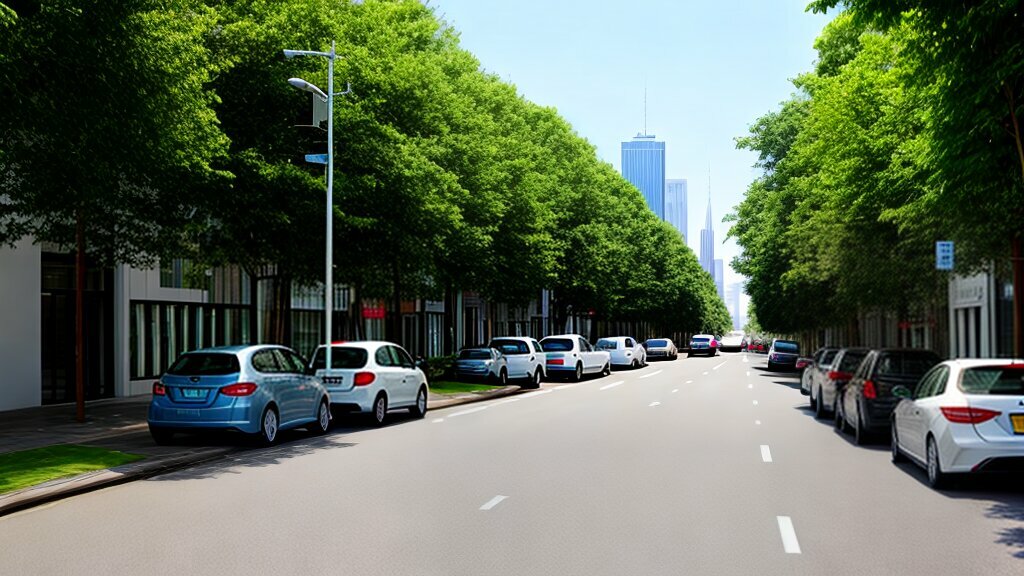
Implementing sustainable infrastructure development practices not only benefits the environment and society but also has positive economic impacts. Energy-efficient buildings often have lower energy bills and are more attractive to tenants, leading to increased property values and reduced vacancies. Therefore, it is crucial for builders and investors to integrate sustainable infrastructure development practices in their projects, to build for a better and greener future.
The Promise of Eco-Friendly Building Materials
As the construction industry continues to adopt sustainable practices, eco-friendly building materials are becoming increasingly popular. These materials are made from renewable resources and have low environmental impact, making them an excellent choice for environmentally conscious builders and homeowners alike.
One such material is bamboo, which is known for its strength and durability. Bamboo is a fast-growing plant that requires little water and no pesticides or fertilizers, making it a sustainable choice for building materials. It is also highly versatile, with applications ranging from flooring to furniture to structural support.
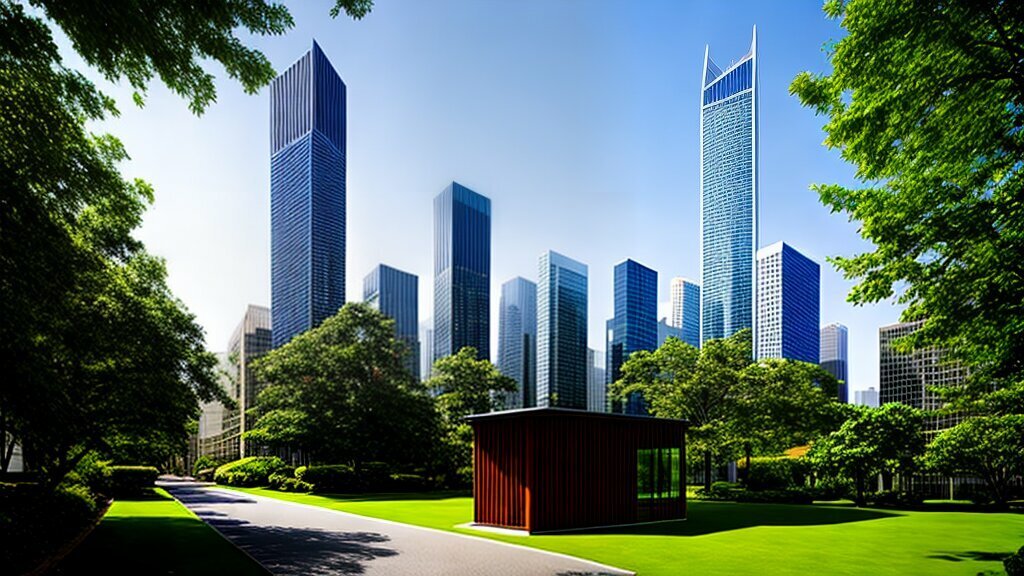
Another popular eco-friendly material is recycled steel. This material is made from scrap metal that would otherwise be sent to a landfill, making it an excellent choice for reducing waste. Recycled steel is also incredibly strong and durable, making it a popular choice for construction projects.
Using eco-friendly building materials not only helps to reduce environmental impact but can also improve indoor air quality. Many traditional building materials can release harmful chemicals and pollutants into the air, leading to poor indoor air quality and potential health problems. By using eco-friendly materials, builders can create healthier living and working environments.
Benefits of Eco-Friendly Building Materials
- Reduced environmental impact
- Improved indoor air quality
- Strength and durability
- Increased energy efficiency
- Reduced waste
With a wide range of eco-friendly building materials available, builders and homeowners have many options to choose from when designing and constructing sustainable buildings. By integrating these materials into construction projects, we can work towards creating a greener future for all.
Energy-Efficient Construction Methods: Powering a Sustainable Future
In the quest for sustainable construction technologies, energy efficiency is a top priority. The construction industry accounts for a significant portion of global energy consumption, making it vital to find methods that reduce this impact. In response, innovative solutions for reducing energy consumption during construction and throughout a building’s lifespan have emerged.
One such solution is the use of green roofs. These roofs are covered in vegetation, which helps reduce energy consumption in buildings. The vegetation absorbs sunlight and heat, reducing the need for air conditioning during the summer months. Additionally, green roofs provide added insulation during the winter, reducing the need for heating. In addition, green roofs can help improve air quality, provide natural habitats for birds and insects, and reduce the urban heat island effect.
| Benefits of Green Roofs: | Reduced energy consumption | Improved air quality | Provides natural habitats | Reduces urban heat island effect |
|---|
Another method for energy-efficient construction is the use of smart glass. This glass has the ability to change its transparency based on the amount of light and heat it receives, reducing the need for artificial lighting and air conditioning. Smart glass can also provide privacy and security by changing from clear to opaque at the flick of a switch, a particularly valuable feature in office buildings and conference rooms.
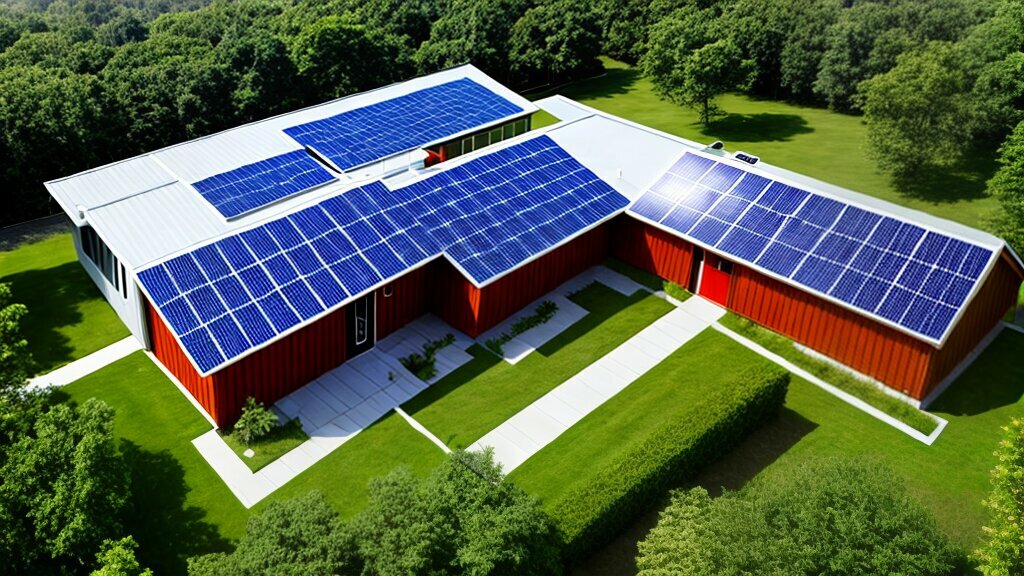
Yet another innovative approach to energy-efficient construction is the use of passive design principles. Passive design involves designing buildings to naturally regulate temperature and lighting, reducing the need for artificial heating and cooling. Examples of passive design principles include designing buildings with southern exposure to maximize natural lighting, overhangs to shade windows during the summer, and the use of thermal mass materials to store heat during the day and release it at night.
- Passive design principles:
- Maximizes natural lighting
- Reduces need for artificial heating and cooling
- Uses thermal mass materials
The incorporation of these energy-efficient construction methods can significantly reduce a building’s energy consumption, creating a more sustainable future. As the construction industry continues to evolve, it is expected that even more innovative energy-efficient solutions will emerge.
Sustainable Architectural Design: Blending Aesthetics and Environmental Responsibility
Sustainability is no longer just a buzzword in the world of architecture and design. Architects and designers are increasingly integrating sustainable practices into their designs, making the buildings not only aesthetically pleasing but also environmentally conscious. Sustainable architectural designs are all about finding a balance between form and function, aesthetics and utility, and environmental responsibility.
One of the critical aspects of sustainable architectural design is the use of eco-friendly and recycled materials. These materials not only lower the carbon footprint but also help in reducing waste. Architects and builders employ a wide range of sustainable materials, from bamboo, reclaimed wood, and recycled metal, to straw bales and rammed earth.
The use of natural lighting and ventilation is another important aspect of sustainable architectural design. Studies have shown that exposure to natural light and fresh air can improve productivity and overall well-being. Architects and designers use skylights, large windows, and atriums to introduce natural light into a building, while strategically placed vents and fans ensure that fresh air is circulated throughout the building.
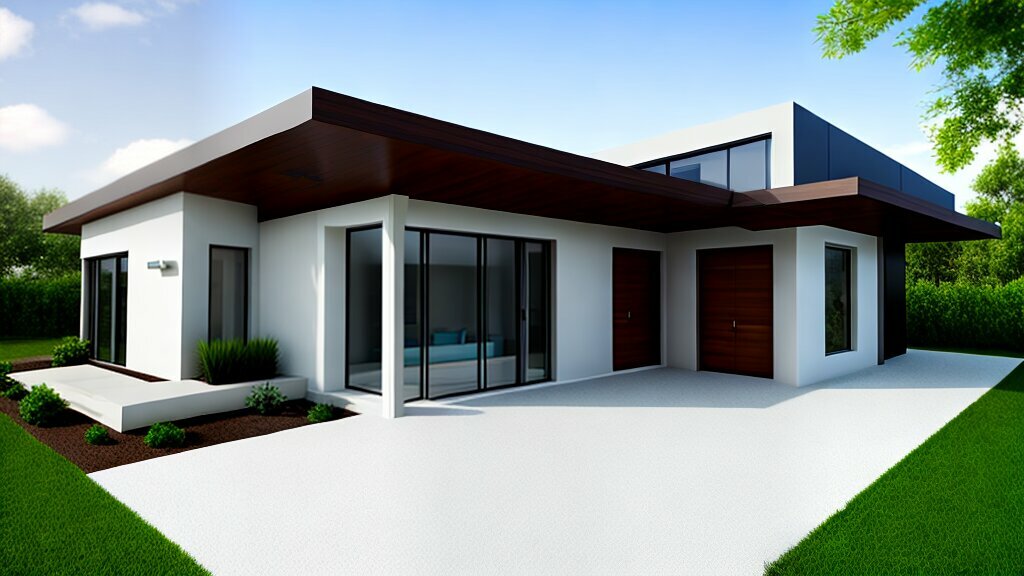
Green roofs and walls are also gaining popularity in sustainable architectural design. These features are not only aesthetically pleasing but also provide insulation, reduce the heat island effect, and improve air quality. Green roofs and walls can also be used for urban farming, providing a sustainable source of food.
Sustainable architectural design is not just limited to the building itself. The surrounding landscape is also taken into account. Landscaping can be designed to conserve water, filter pollutants, and provide habitats for native species. Water conservation practices, such as rainwater harvesting and greywater reuse, can also be incorporated into the design.
Sustainable architectural design is not just a trend; it is a necessity to ensure a better and brighter future. By embracing sustainable practices, architects and designers are not only creating beautiful buildings but also reducing their impact on the environment.
Conclusion
As we look to build a greener future, it’s clear that sustainable construction technologies and eco-conscious construction innovations will play a crucial role. By implementing green building practices, investing in sustainable infrastructure development, and using eco-friendly building materials, we can reduce our impact on the environment and create more sustainable communities.
Energy-efficient construction methods are also key to powering a sustainable future, as they help to reduce our reliance on non-renewable energy sources. And by blending aesthetics and environmental responsibility through sustainable architectural design, we can create beautiful buildings that are both functional and environmentally responsible.
While there is still much work to be done, the innovations and technologies available today offer great promise for a more sustainable future. By working together and making sustainable choices, we can create a better world for ourselves and for generations to come.
FAQ
Q: What are some examples of sustainable construction technologies?
A: Some examples of sustainable construction technologies include solar panel systems, rainwater harvesting, green roofs, and energy-efficient insulation.
Q: What are green building practices?
A: Green building practices are techniques and strategies that aim to reduce the environmental impact of construction. This can include using renewable materials, implementing energy-efficient systems, and promoting sustainable design principles.
Q: What are eco-conscious construction innovations?
A: Eco-conscious construction innovations are advancements in the construction industry that prioritize environmental sustainability. This can include using recycled materials, implementing energy-saving technologies, and reducing carbon emissions during the construction process.
Q: What is sustainable infrastructure development?
A: Sustainable infrastructure development entails constructing and designing infrastructure projects in a way that minimizes their environmental impact, promotes resource efficiency, and addresses climate change challenges.
Q: What are some examples of eco-friendly building materials?
A: Examples of eco-friendly building materials include bamboo, recycled steel, reclaimed wood, and low VOC (volatile organic compound) paints.
Q: What are energy-efficient construction methods?
A: Energy-efficient construction methods are techniques used to construct buildings and structures that reduce energy consumption. This can include improving insulation, utilizing natural lighting, and installing energy-efficient appliances and systems.
Q: What is sustainable architectural design?
A: Sustainable architectural design refers to the practice of creating buildings that minimize negative environmental impacts, optimize resource efficiency, and promote occupant wellbeing. This includes considerations such as energy efficiency, water conservation, and using environmentally friendly materials.



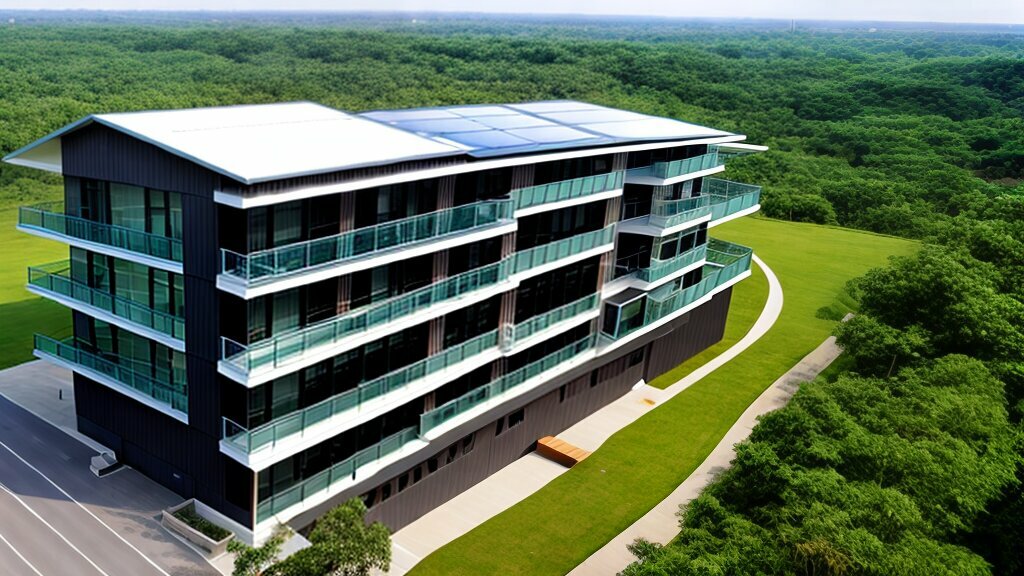
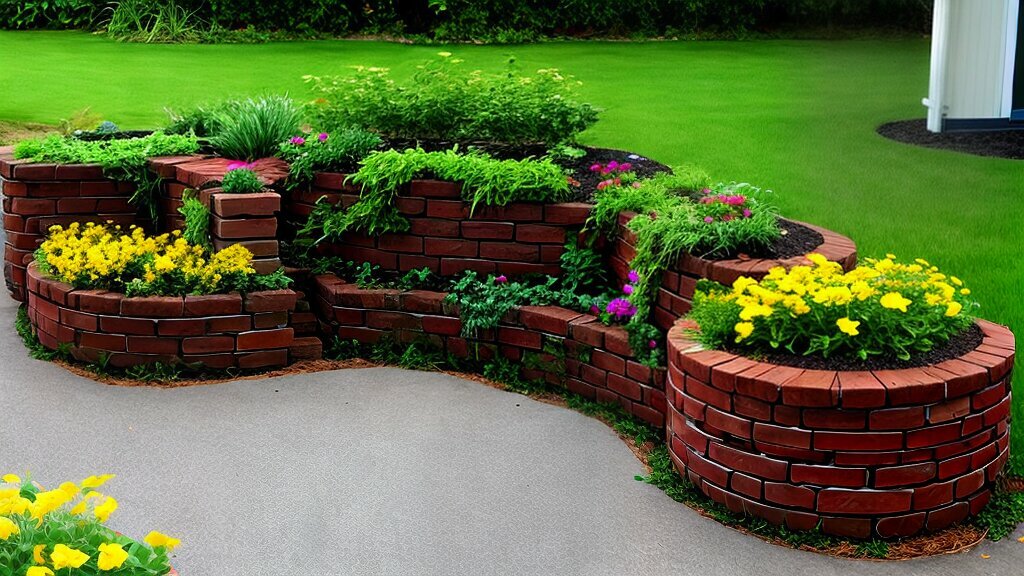



Modern Architecture: EcoTech Building a Green Future
12 months ago[…] renewable energy into architectural design requires a holistic approach. It involves not just the installation of technology but also […]